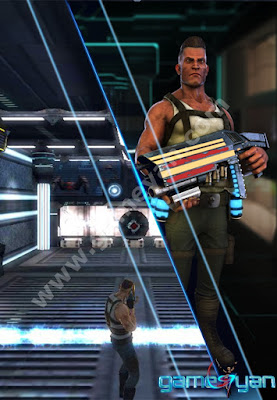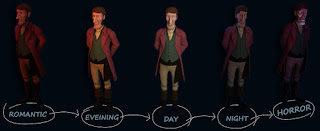Characters
define a game and if the name Mario rings some bells for you, then you can very
well understand the wonders Character Designer Game can do for a game. The
mushroom-obsessed, red hat Italian became one of the most iconic characters in
the history of gaming world. Powerful characters with solid gameplay have even
resulted in inspiring movies. Need for Speed, Prince of Persia and Angry Birds
need a special mention here.
Characters
like Nathan Drake and Gordon Freeman went on to develop a cult following of
their own. All these have one common thread – state-of-art character modeling. The
point is that 3D modeling serves as strength of a game. This, of course,
doesn’t undermine the importance of other game development aspects, but here
are four key reasons why 3D character modeling is crucial to Virtual Reality
Games Developer.
1) Characters Serve as USP
PlayerUnknown’s
Battleground or PUBG is the latest gaming sensation. This game is a typical
example where players take the form of characters. Although there are no fancy
names, the very fact that the players themselves can identify with its 3D
Character Modeling is what makes it more interesting.
To
make it clearer, let’s cite another example. The name Ned Stark or Lannister
immediately takes us to the land of Game of Thrones. Characters of your game
serve as its USP and its identity with which the players can connect
immediately. Hence, you cannot afford to develop poorly modeled ones.
2) Level up with Technology
Hardware
of gaming consoles like Xbox, PlayStation and Nintendo are always evolving. The
graphical capabilities of such consoles are now far more advanced than what
they were a decade ago. If you wish to hit it big, you need to ensure that your
characters are at par with the technology. Lara Croft, the famous protagonist
of Tomb Raider is a classic example.
Originally
released for Sega Saturn and PlayStation, this Game Art Outsourcing spanned
the consoles and was critically acclaimed by gaming experts for its environment
and character development. Tomb
Raider was an affair of almost a decade ago. So, if you wish to win the market
in this era, 3D character modeling is one of the best bets you have.
3) Quality Models
3D
modeling for gaming is a whole different ordeal. Although the graphics of games
have increased, Game Art Design still have to face limitations during
character modeling process. With advent of smartphones and tablets, polygon
budgets have become tight. So, developers often have to count on texturing
details or else the quality of the models can get compromised. All these
limitations can result in mayhem if proper techniques aren’t employed.
4) Attention to the Details
While
designing 3D character models, Character Modeling Companies need to pay
attention to level of details. For example, a model designed for first person
character will feature more intricate details than the character further away
from it. The objects closer to the player have to be clearer. Paying attention
to such minute details is another crucial aspect of 3D character modeling, and
another good reason why this step is considered pivotal in game development.
Developing
high quality models with precision is no small feat, and therefore, you cannot
entrust this work to just any Animation Character Rigging. While
outsourcing has become one of the most viable options for 3D character
modeling, you need to ensure that you pick out the right one. With the right
team behind your project, you can get some real masterpieces for your games.

